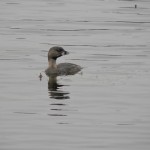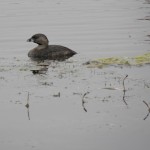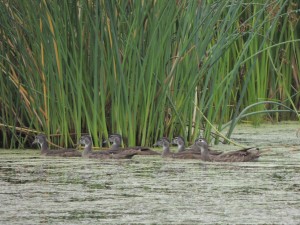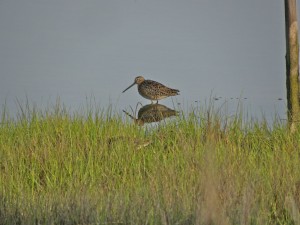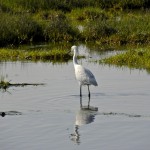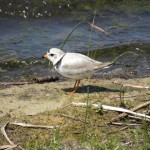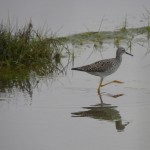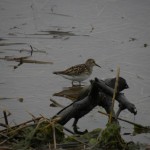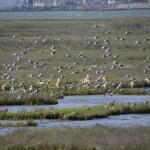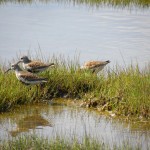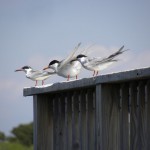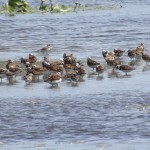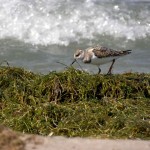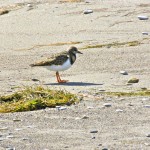12 August 2013. Morriston ON. My only foray into the woods today drew a blank. I think I heard distant Black-capped Chickadees and Great-crested Flycatchers, but that’s about it. There were tons of mosquitoes though and even a liberal (for me) application of bug repellent achieved only partial protection. As a precaution I pulled on an old white business shirt that I keep in my car for going into biting-insect territory, light colours supposedly helps minimize your mosquito-appeal and it’s also a bit of recognition that I have no further use for business shirts; retirement’s revenge.
Leaving all of that behind I set off to a country clothing outfitters in search of some really good wet-weather boots. My 45 year-old wellies, while still rugged and perfectly watertight, are absolute murder on my aging feet. Heading west and driving along a quiet country road, I spotted a large pond surrounded in large part by pasture land and flanked on one side by a rather comfortable looking home. Those homeowners have set up a rather nice little dock at the pond’s edge with a larger sitting area at its end together with a couple of comfortable chairs and a canoe tied alongside. Just offshore a fountain of considerable capacity spews an unending plume of water. I suspect that such a continuous aeration of the pond has significantly changed the ecology of the pond and whether it’s for the better or not probably depends on whether you ask pre- or post-fountain organisms. But it looks pretty, there are sparkling white water lilies scattered here and there and the pond’s perimeter is defined with tall cattails.
Scanning across the pond I watched a Great Blue Heron beating the living daylights out of a small catfish. I learned how to prepare a catfish lunch, here’s what you do: shake it hard, smack it against a log a couple of times, drop it and watch for movement, lunge and stab again, shake a bit more and finally a couple more whacks seems to do the trick. Serve immediately.
Just along from the Great Blue Heron was a Green Heron, I was startled by the size difference. It’s not that I always thought of Green Herons as big birds, it’s just that’s seeing them side by side really emphasized how small the Green Heron is.
Then in the middle of the pond I found a couple of Pied-billed Grebes, an adult and a juvenile; they really made my day. It’s been a while since I’ve seen a Pied-billed Grebe; they become quite hard to find, even elusive while breeding, seeking out ponds and small lakes with dense emergent vegetation like cattails. They are an odd duck (to coin a phrase), unlike most grebes they score pretty low on the elegance quotient, they sit in the water with a rather hump-backed look and are coloured from the drab end of the palette. Almost all authors are at pains to draw attention to their bill, perhaps it’s the most notable thing about them for it’s so strikingly chicken-like and, as the bird’s name suggests, it’s pied.
But for all that they’re neat birds. They are the hallmark of a small lake or pond and have the ability to sink without effort until there’s just a periscope poking above water. You can see the difference in the pictures below. It’s almost as if it has pulled out the drain plug. That’s almost what’s happened, in fact by compressing its body feathers it has squeezed out the air and reduced its buoyancy; a clever trick.
Two pictures above will probably not be visible if you’re reading this as an email. Go to the site to see them in all their glory
